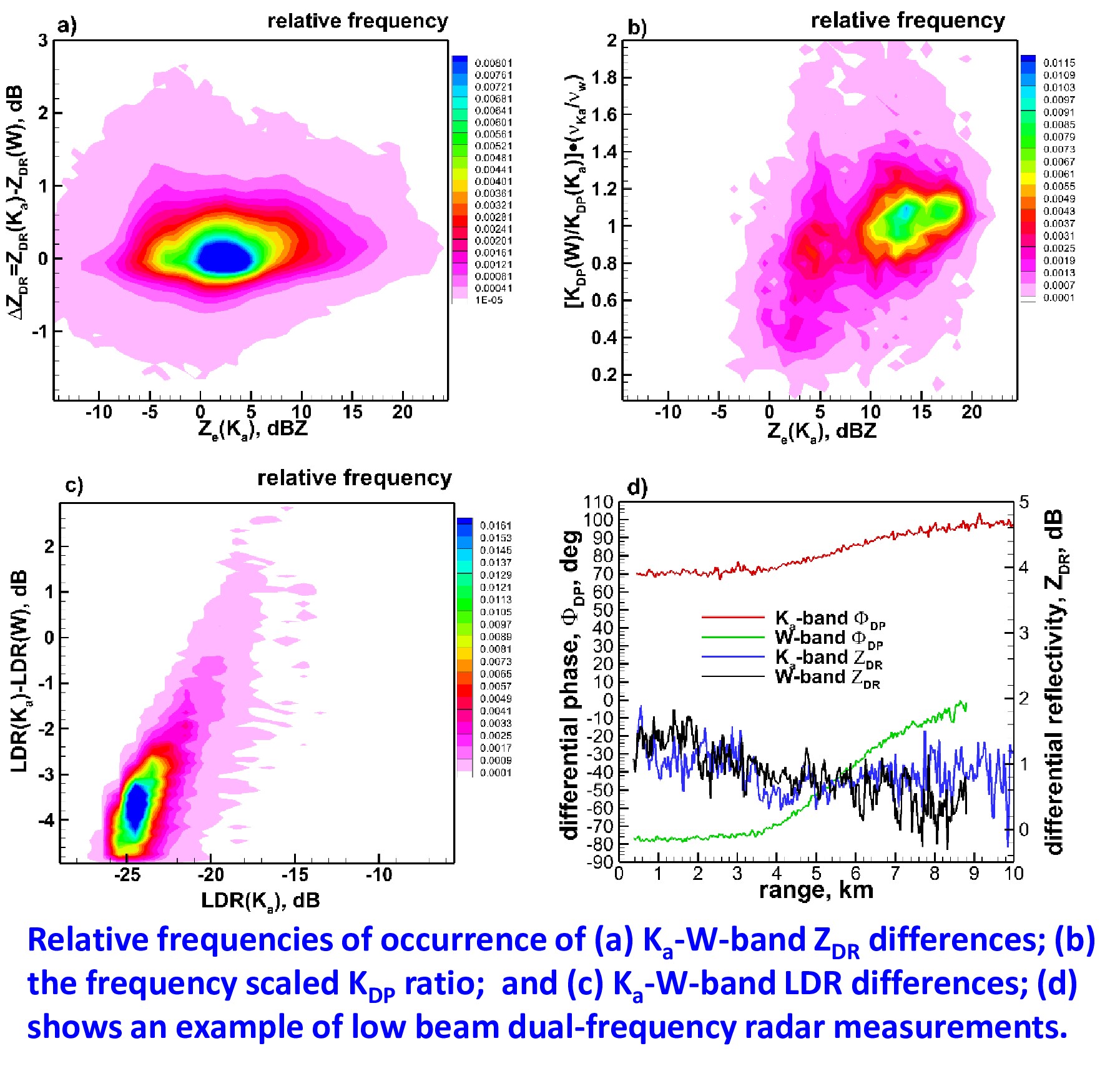Evaluating polarimetric variables of ARM scanning cloud radars in ice hydrometeors
Submitter:
Matrosov, Sergey — University of Colorado
de Boer, Gijs — University of Colorado Boulder
Area of research:
Cloud Processes
Journal Reference:
Science
Several newer Atmospheric Radiation Measurement (ARM) scanning cloud radars now provide measurements of such polarimetric variables as differential reflectivity, differential phase shift, and the copolar correlation coefficient in addition to depolarization ratio, which was traditionally available with ARM cloud radars. These variables have been used previously with precipitation radars for different applications. This study investigates details of the use of these variables at cloud radar frequencies (i.e., 35 and 95 GHz) for microphysical retrievals and quantitative precipitation estimation (QPE).
Impact
The use of polarimetric radar variables beyond the depolarization ratios provides potential for more detailed microphysical retrievals and improved QPE, especially in snowfall. Cloud radars generally have better spatial resolutions and sensitivities compared to precipitation radars and the addition of new polarimetric measurements allows for better insights into the microphysical processes and mechanisms governing evolutions of clouds and determining their radiative impact.
Summary
The Oliktok Point, Alaska Scanning ARM Cloud Radar (SACR-2) measurements in snowfall were analyzed to evaluate differential reflectivity (ZDR) and specific differential phase (KDP) at 35 and 94 GHz frequencies. The measurements indicated that ZDR differences at these two frequencies are, on average, less than about 0.5 dB and do not have a pronounced trend as a function of snowfall reflectivity. The observed ZDR differences agree well with modeling results obtained using integration over nonspherical ice particle size distributions. Although non-Rayleigh backscattering effects cause differences in 35 and 94 GHZ reflectivities, KDP data derived from differential phase measurements are approximately scaled as reciprocals of corresponding radar frequencies, indicating that the influence of non-Rayleigh effects on KDP is rather limited. This result is also in satisfactory agreement with data obtained by modeling using realistic particle size distributions. Since KDP is a noisy polarimetric radar variable, the observed frequency scaling of specific differential phase has an important practical implication as larger (and hence more reliably derived) KDP values at higher radar frequencies might be advantageous for some applications (e.g., snowfall QPE at close radar ranges).


